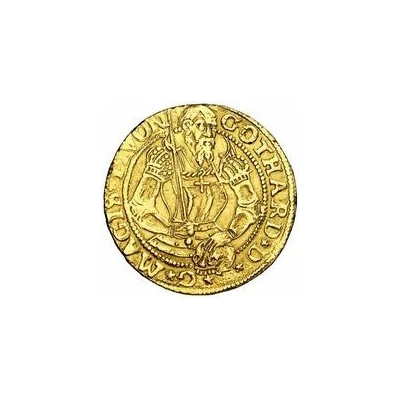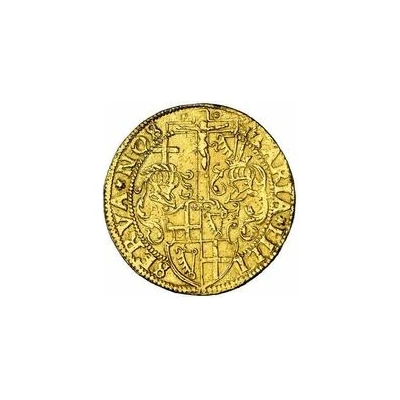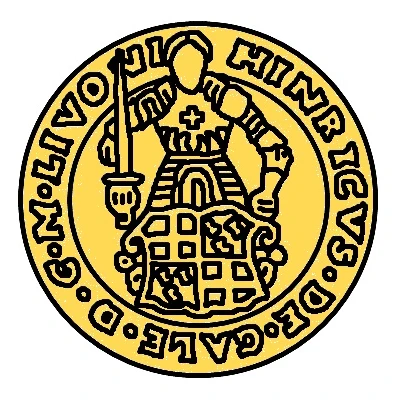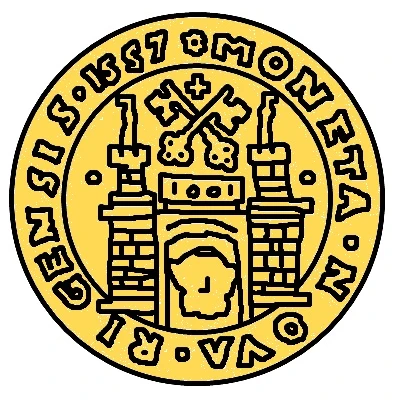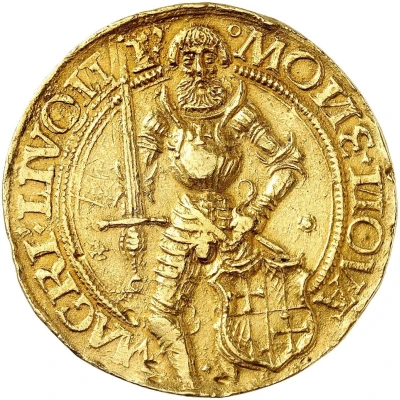
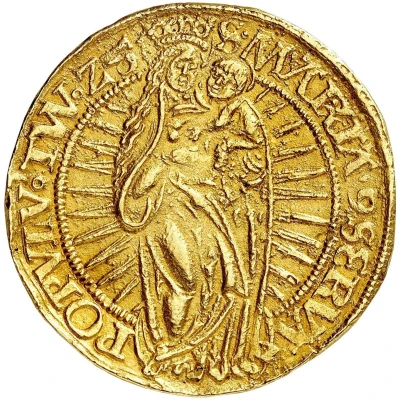

© Fritz Rudolf Künker GmbH & Co. KG, Osnabrück and Lübke & Wiedemann KG, Leonberg
10 Dukat - Wolter von Plettenberg Wenden ND
| Gold (.986) | 34.90 g | 40 mm |
| Issuer | Livonian Order (Livonian Confederation) |
|---|---|
| Master | Walter of Plettenberg (1494-1535) |
| Type | Standard circulation coin |
| Years | 1528-1535 |
| Value | 10 Ducats (3240) |
| Currency | Schilling (1422-1561) |
| Composition | Gold (.986) |
| Weight | 34.90 g |
| Diameter | 40 mm |
| Shape | Round (irregular) |
| Technique | Hammered |
| Orientation | Variable alignment ↺ |
| Demonetized | Yes |
| Updated | 2024-10-06 |
| Numista | N#141874 |
|---|---|
| Rarity index | 100% |
Reverse
Crowned person holding child to the right, all surrounded by legend.
Script: Latin
Lettering: MARIA ! SERVA · POPVLV · TVV · Z5
Translation:
Maria Serva Populum Tuum
Marie, save your people
Edge
Plain
Comment
Depending on the source, this coin is listed as being minted at Riga or at Wenden. Because the mint's name is not mentioned in the legend, Wenden is the most likely mint, although more evidence would be needed to say for sure.Three varieties exist in regards to the marks that appear around the person on the obverse:
1) Without any marks.
2) With one mark (rosette to the right).
3) With two marks (rosette to the right and cross to the left).
The original coins, struck in 1525, did not have any marks. Only one example is known, which is in the Münzkabinett Berlin. Based on the weight of that piece, it has a value of 12 Dukat, and the dies for this piece were also used to strike the 1 Thaler piece of the same date. The coins with one mark were struck in 1528, when Wolfgang Nothafft took office. The dies from the original piece were reused to make these pieces, with the only difference being the addition of the rosette. And finally, the coins with two marks were struck in 1535, when Gerd Schriver took office. Like before, he reused the dies from the previous pieces, with the only difference being the addition of a cross.
The pictured example was struck in 1535. An example struck in 1528:
© Fritz Rudolf Künker GmbH & Co. KG, Osnabrück and Lübke & Wiedemann KG, Leonberg
Interesting fact
One interesting fact about the 10 Dukat coin is that it was issued by the Livonian Order, a military order of German knights, during the 16th century. The coin features an image of Wolter von Plettenberg, the Master of the Order from 1528 to 1535, and was made of gold with a purity of .986. Despite its age, the coin remains a popular collector's item among numismatists due to its historical significance and rarity.
